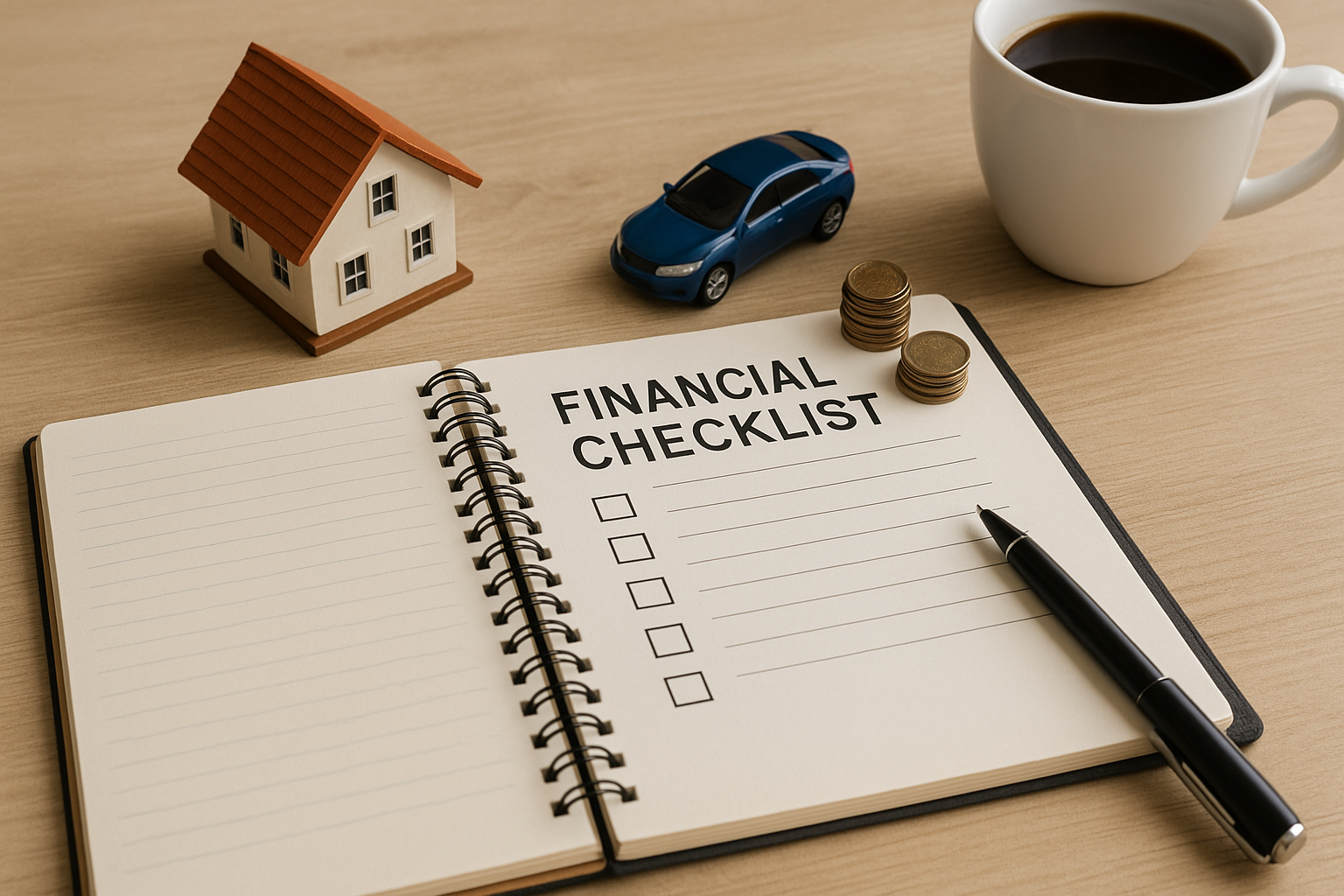Making a major purchase—whether it’s buying a car or saving for a down payment on a home—can feel overwhelming. A clear financial checklist helps ensure you’re prepared, avoid surprises, and make confident big purchase decisions. Follow these steps to evaluate your readiness, compare options, and protect your long‑term financial well‑being.
1. Assess Your Current Financial Picture
- Review your cash flow: Calculate your monthly net income and essential expenses. How much can you comfortably allocate toward a new car payment or mortgage?
- Check your emergency fund: Aim for 3–6 months of living expenses in liquid savings before taking on new debt.
- Evaluate your debt load: Combine student loans, credit cards, and other obligations. Your total debt‑to‑income ratio should ideally stay below 36%.
2. Set a Realistic Budget
- Target price range: For a vehicle, include taxes, registration, and insurance. For a home, factor in closing costs, property taxes, and maintenance reserves.
- Down payment and financing: Aim for at least 10–20% down on a car and 20% on a home to secure better loan terms and avoid private mortgage insurance (PMI).
- Monthly payment cap: Keep car payments under 10–15% of take‑home pay; mortgage payments (including taxes and insurance) under 25–28%.
3. Improve Your Credit Profile
- Check your credit report: Obtain free annual reports from the three bureaus and verify there are no errors.
- Build or repair credit: Pay down high‑interest cards, avoid new inquiries, and make all payments on time.
- Understand loan offers: A higher credit score can save you thousands in interest over the life of an auto loan or mortgage.
4. Compare Financing Options
- Auto loans: Shop rates from banks, credit unions, and dealer offers. Pre‑approval helps you negotiate from a position of strength.
- Mortgages: Explore fixed‑ vs. adjustable‑rate mortgages and compare APRs from multiple lenders. Don’t forget to include closing fees, origination charges, and discount points in your comparison.
5. Factor in Total Cost of Ownership
- Vehicle costs: Estimate fuel, maintenance, insurance, and potential repairs. Websites and forums can provide real‑world ownership data.
- Homeownership costs: Beyond mortgage payments, budget for utilities, HOA fees, routine maintenance, and occasional repairs.
- Depreciation vs. equity: Cars depreciate rapidly, while homes typically appreciate. Consider long‑term value when deciding how much to spend.
6. Plan for Future Flexibility
- Resale and refinancing: Choose car models and mortgage terms that retain value and allow refinancing if rates drop.
- Career and lifestyle changes: Ensure your payment obligations remain manageable if your income fluctuates or your family grows.
- Emergency cushion: Maintain a “what‑if” fund even after purchase to handle unexpected expenses without derailing your budget.
7. Execute with Confidence
- Negotiate effectively: Whether at the dealership or with a lender, knowing your pre‑approved amounts and market rates gives you leverage.
- Read all documents: Review sales contracts, loan disclosures, and closing statements carefully. Watch for hidden fees or unfavorable terms.
- Seal the deal: Once you’re comfortable with the numbers and terms, move forward—and celebrate your well‑informed decision.
Conclusion
By following this comprehensive financial checklist, you’ll approach big purchase decisions—whether buying a house or buying a car—with clarity and confidence. Assess your finances, set a realistic budget, optimize your credit, compare financing, and account for total ownership costs. With careful planning and disciplined execution, you’ll safeguard your financial health while enjoying the rewards of your major purchase.
